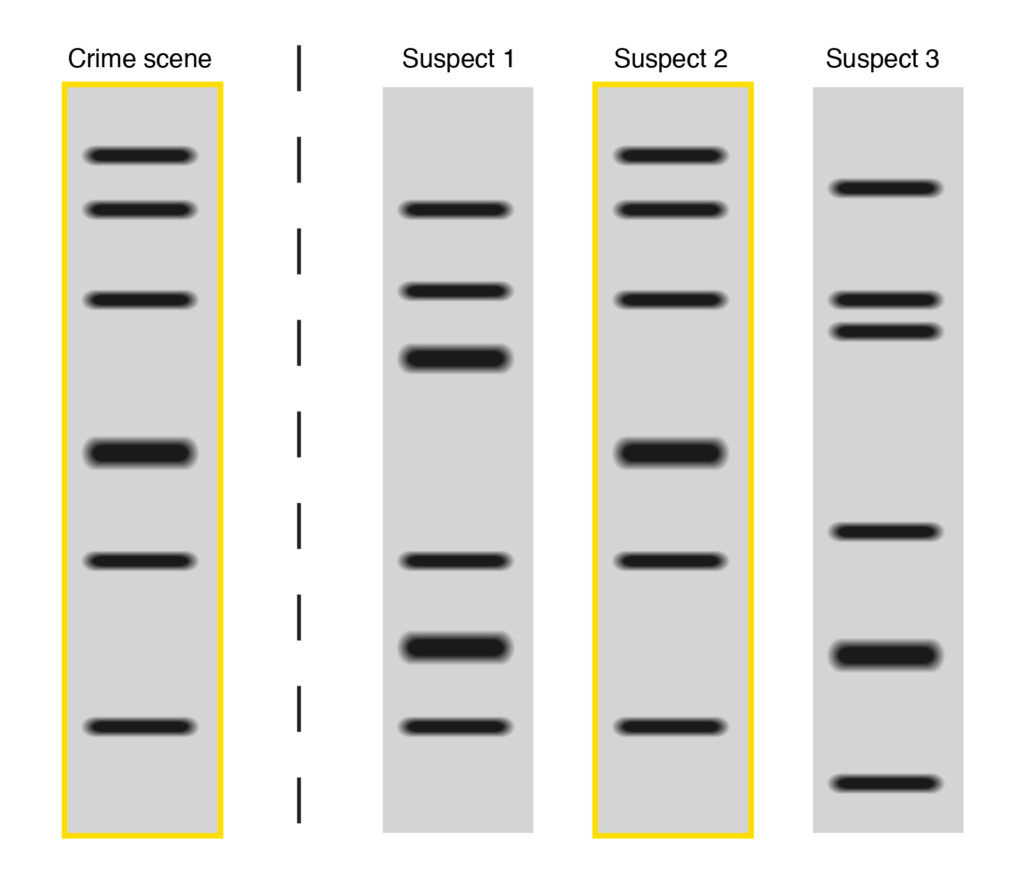It is estimated that up to 10,000 people may be wrongfully incarcerated each year. Since its inception in 1992, the Innocence Project has sought to exonerate the wrongfully incarcerated through DNA evidence. Ultimately due to the advent of Polymerase Chain Reaction (PCR) and subsequently DNA fingerprinting, 356 cases have been exonerated since 1989. Racial bias in the courtroom has led to a disproportionate number of those exonerated following wrongful incarcerated being Black (60%). In this way, DNA profiling is not just important for scientific progress, but also social justice. In order to fully understand how DNA has become an important tool for social justice, it is important to understand how scientists can visualize DNA to reveal our identity, given that 99.9% of DNA is conserved between all humans.
How can DNA differ?
Deoxyribonucleic acid, or DNA is the genetic information present in cells. DNA codes for proteins and other functions through a four letter code composed of A’s, T’s, C’s and G’s. The human genome, or all the DNA that makes up humans, was not fully sequenced until 2003. From this project it was revealed that very little DNA sequence is different between individuals (.1%). On the surface this may be confusing given the wide diversity of traits, but it is important to note that these differences may come from small changes in DNA. However, this .1% that can vastly differ between humans is what makes every person’s genetic identity unique, with the exception of identical twins. Some of these areas of DNA are known as Short Tandem Repeats (STRs) or a small sequence, such as “GATA” that repeats over and over. What is unique among individuals is the number of repeats in the sequence and where they are located. Using these specific areas we can distinguish individuals.
What inventions made this possible?
In order for DNA to be useful in a criminal investigation, there has to be a larger volume than what is typically collected at a crime scene. For example, trace amounts may be present at the scene, but in order to perform an assay you may need 1000 times that amount. Due to the invention of PCR, a process that essentially copies DNA, the amount of DNA collected is not a limiting factor. PCR is able to amplify minute volumes and exactly copy its sequence. Using this technique, scientists break open collected cells, isolate the DNA, and then amplify it with PCR. Forensic scientists are then able to examine this amplified DNA using a process called DNA profiling. DNA profiling allows scientists to easily visualize and compare samples of DNA, making a “picture” of the potential suspects. Typically, as mentioned before, the STRs in DNA that are highly variable are examined through a process called gel electrophoresis.
What is gel electrophoresis?
In order to visualize lengths or intensities of DNA, a process called gel electrophoresis is typically used. By taking advantage of agar, a substance found in seaweed and some algae, we can create a porous gel substance to run DNA through to separate it by size. The idea is that by attracting DNA (which is negatively charged) to a positive electrode, the DNA will move towards the positive charge and consequently its speed will be determined by its size. Longer sequences will struggle to move through the pores as they are more bulky than shorter sequences. Over time the sequences will separate, and we get an image like the one below. When we trim DNA with special proteins used in the lab at these STRs, no combination of lengths is likely to be the same between individuals. In this way scientists are able to take something seemingly abstract, like your DNA sequence and make it something that can be visualized.

While DNA profiling and the technology responsible has been a great advancement for science, it has also been invaluable for the justice system. Further advances have allowed DNA profiling to not only be done by forensic scientist in the lab, but kits have allowed quick results in as little as two hours. These kits, called “Rapid DNA” allow a quick cheek swab performed in an arrest booking to generate a complete STR DNA profile hands-free. It’s exciting to think about the future of the intersection of DNA testing and social justice given these advances. Instead of an exoneration years (14, on average) after a wrongful incarceration, we now have the technology to rapidly test DNA before an incarceration. While this doesn’t begin to solve every problem involving racial discrimination in the courtroom, it’s a step in the right direction.
Peer edited by Nila Pazhayam